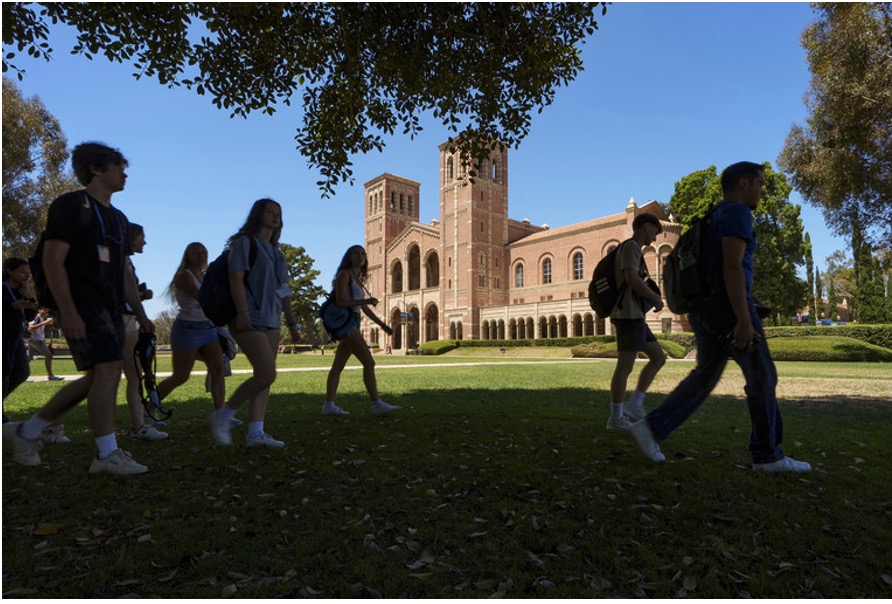Comments
NEVER FORGET - California is on the verge of making Ethnic Studies a permanent fixture in its public schools. That’s good news—if, and only if, the curriculum truly reflects the diversity it claims to champion. There is one community whose story has too often been erased, distorted, or tokenized in this discussion: the Jewish people.
Jews are one of the oldest continuous ethnic and religious communities in the world, with a story that stretches from ancient civilizations to modern democracies. In America, that story is over 350 years old; in California, it predates statehood. Jewish immigrants and their descendants have shaped industries, arts, sciences, technology, politics, labor movements, and civil rights campaigns. Yet our history is also scarred by exclusion, mob violence, restrictive housing covenants, social quotas, and one of the oldest hatreds in human history: antisemitism.
To ignore or diminish this history in Ethnic Studies is not just an academic oversight—it is an act of cultural erasure. And in today’s climate, that erasure is not harmless. Antisemitism is rising to levels unseen in decades, from synagogue shootings and violent assaults to online harassment and conspiracy theories. If Ethnic Studies is truly about confronting prejudice and building understanding, it cannot selectively omit the world’s oldest prejudice.
The controversy is not hypothetical. Early drafts of California’s Model Ethnic Studies Curriculum did not simply fail to include Jewish history—they contained language and materials many considered antisemitic, including content that singled out Jews for collective blame. That is unacceptable in a state with the largest Jewish population outside Israel. When you leave out the Jewish story, you leave the door open to misunderstanding and bigotry.

Jewish history in America is not just about immigration and assimilation. It is about the tension between being both insiders and outsiders—embraced in moments of shared struggle, scapegoated in moments of crisis. It is about Jewish labor organizers standing on picket lines with Latino and Black workers, Jewish lawyers defending civil rights activists in the Deep South, Jewish scientists and innovators driving technological progress. And it is about the simultaneous need to guard against waves of hate, whether from white supremacists marching in Charlottesville, extremists targeting synagogues, or online networks spreading lies.
To exclude Jewish history from Ethnic Studies sends a dangerous message: that some forms of bigotry matter more than others, and that certain communities’ suffering is politically inconvenient. True diversity means inclusion without hierarchy—no group’s story should be considered optional.
Including Jewish history does not mean reducing it to the Holocaust or to a chapter on European Jewry. California’s Jewish community is far more diverse than that. Students should learn about Sephardic Jews who came from Spain and Portugal, Mizrahi Jews from the Middle East and North Africa, Ethiopian Jews, and Jews from Latin America. They should understand the story of Jewish refugees who fled Arab countries in the mid-20th century, just as they learn about Holocaust survivors who rebuilt their lives in Los Angeles and San Francisco.
This is not about privileging one group over another—it’s about telling the truth, the whole truth. A truly inclusive Ethnic Studies course teaches that identity is complex, history is interconnected, and prejudice wears many masks. It should challenge simplistic narratives and encourage critical thinking, not reinforce ideological silos.
The purpose of Ethnic Studies is to foster empathy, deepen understanding, and give students the tools to navigate an increasingly diverse and polarized society. When Jewish history is omitted, the curriculum not only undermines that goal—it distorts it. It signals to students that antisemitism is somehow less urgent, less real, or less worthy of study. That is not just false; it is dangerous.
California has a choice to make. It can design an Ethnic Studies program that lives up to its promise of inclusion, or it can allow the subject to become a political battlefield where some histories are elevated, and others erased. The stakes are high. Young people are forming their understanding of the world now. If we want the next generation to stand against all forms of hate, we must give them the full picture.
That means telling every community’s story—including the Jewish one. Because the moment we decide which histories matter and which do not, we’ve already failed the mission of education. And once history is erased in the classroom, it becomes that much easier to erase in the real world.
(Mihran Kalaydjian has over twenty years of public affairs, government relations, legislative affairs, public policy, community relations and strategic communications experience. He is a leading member of the community and a devoted civic engagement activist for education spearheading numerous academic initiatives in local political forums. Mihran is also the President of Industrial Intermediates & Infrastructure of TCCI)
















